During the period of the 40's until the end of the 60's Rolex, as different watchmaker to create its bracelets on a base of folded stainless steel held by rivets.
After 1960, Rolex developed a new concept of bracelet on a folded solid steel base avoiding the degradation of rivets and allowing a better adjustment to the wrist of the links.
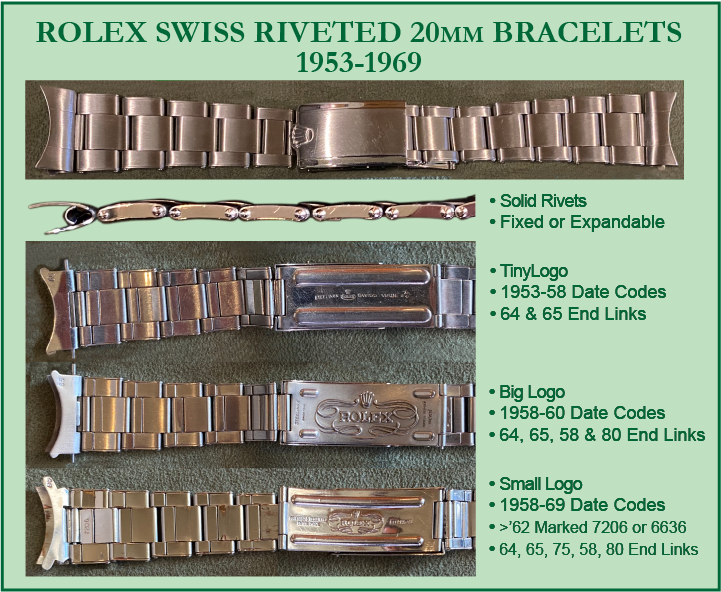
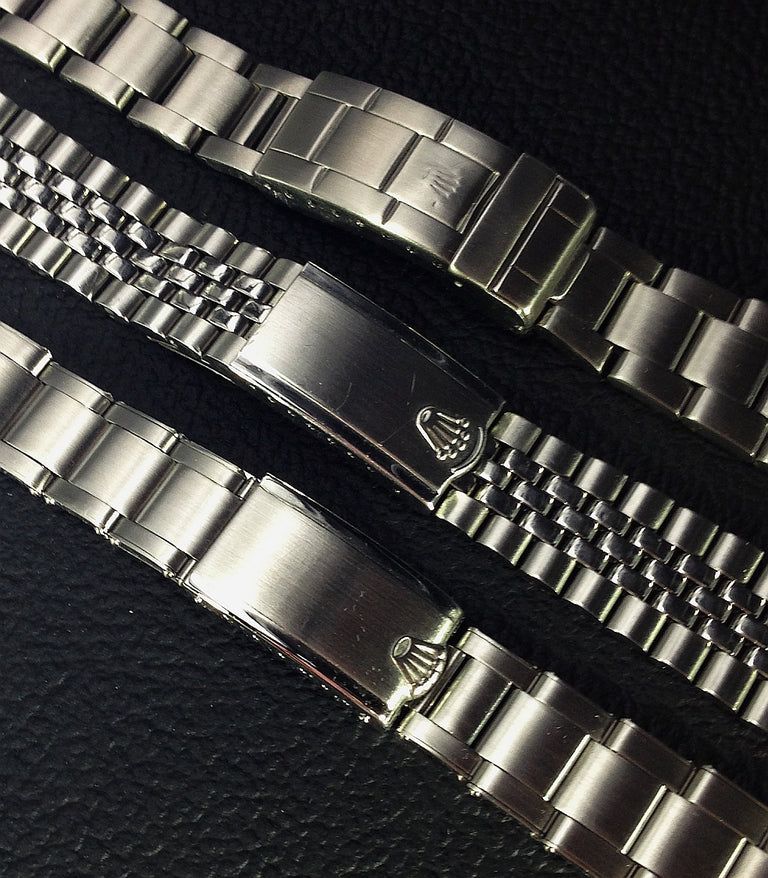
After 1960, Rolex developed a new concept of bracelet on a folded solid steel base avoiding the degradation of rivets and allowing a better adjustment to the wrist of the links.
These are the references of bracelets 7834,7835,7836,9315 which make then their appearance.
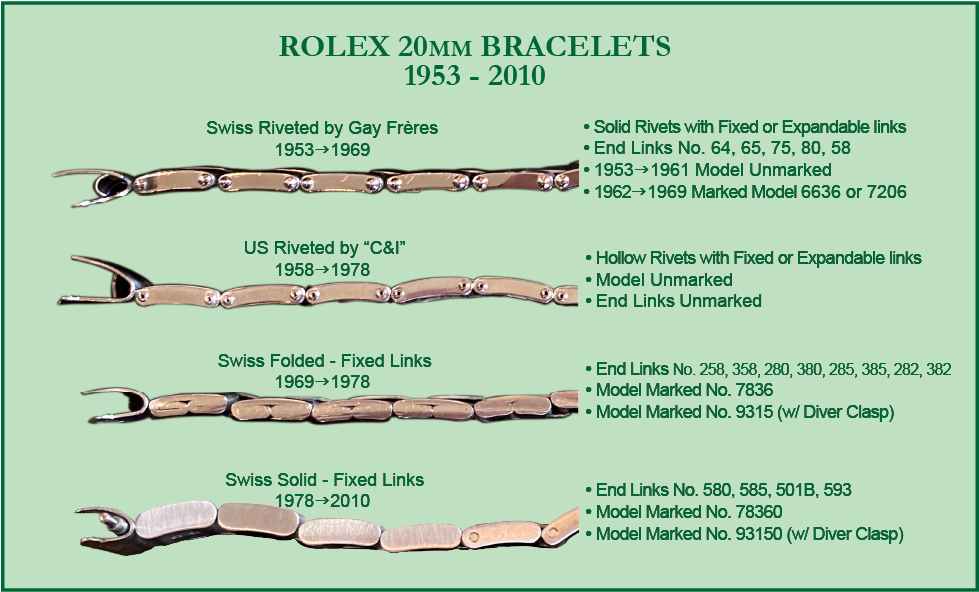
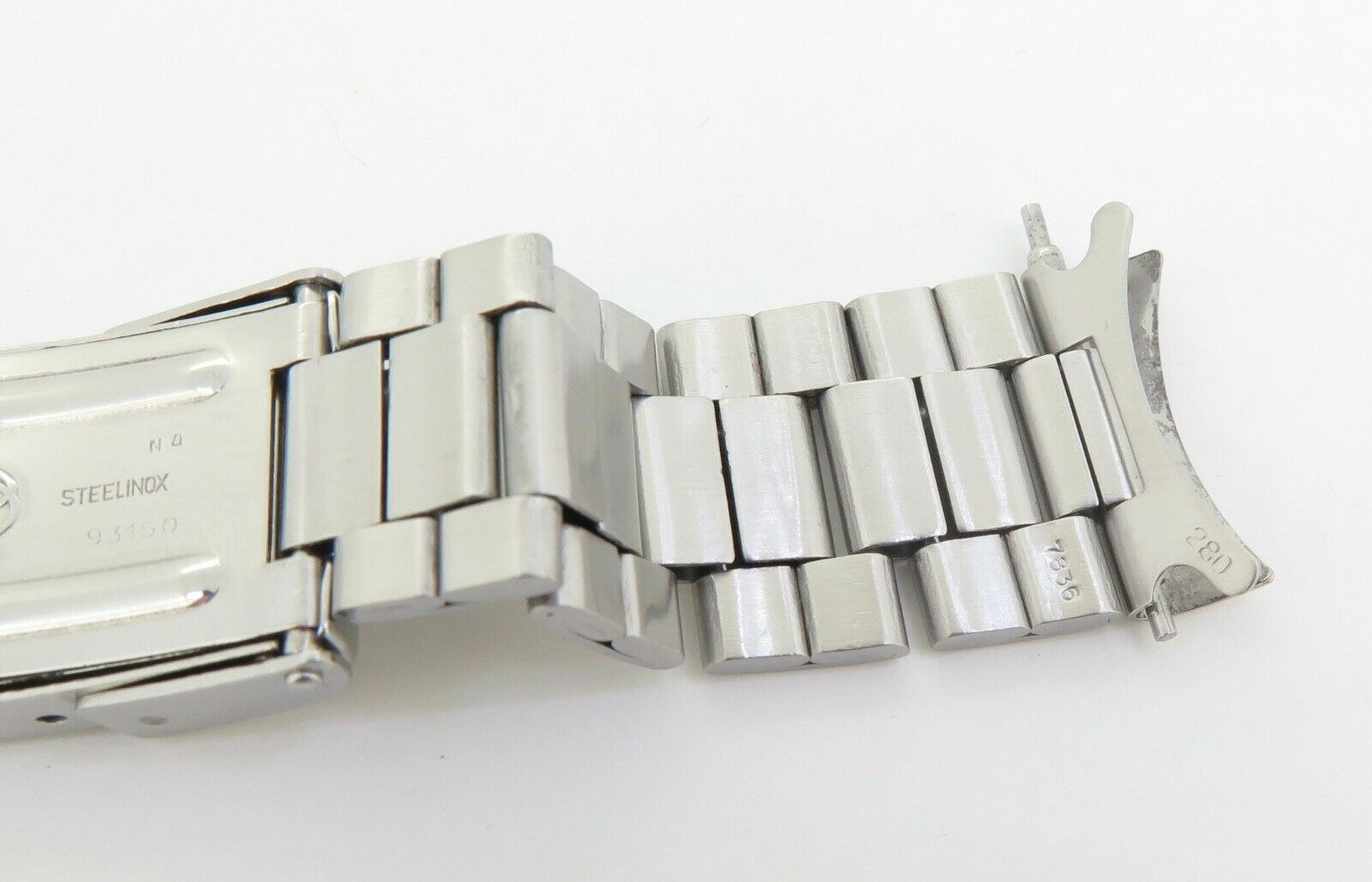

Until 1976 Rolex continued with folded link bracelets and it was from 1976 onwards that the armoured bracelets appeared for extended resistance and life.
Their design and architecture still seems the same, however the bracelets are in solid steel.
The references 93150, 78390, 78490, 78390, 78360, 78340, 62510H, 93153, 78753, 78363, 78350, 78353 are now available.

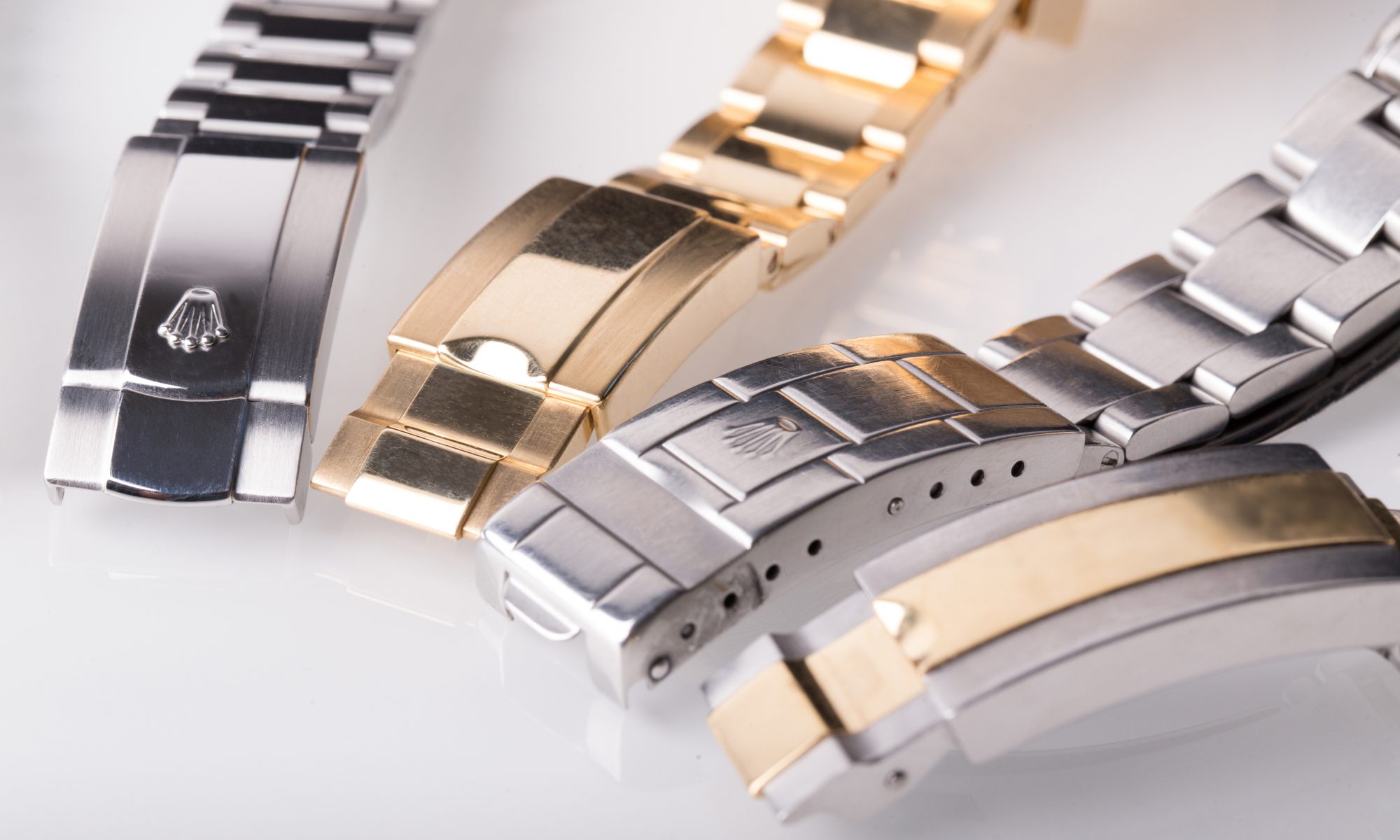
It is from 2010 that Rolex pursues its ascent in the solidity of its BRACELETS (by buying at the end of 2000 their own subcontractor Gay Frères in Switzerland) by elaborating bracelets armoured at all levels: clasp, fixings, central links, deploying blades, they are certainly heavier bracelets but more adapted for a daily use whatever is its activity
The references 72610,78200,69200,72200,63600 (super jubilee) are born with the new models of Rolex watches in ceramics.

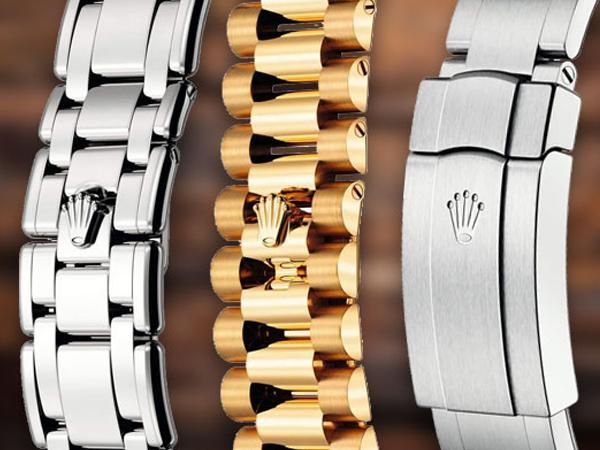

 Rolex Vintage Chronometer Red Hang Seal Tag CERTIFIED OFFICIAL CHRONOMETER
Rolex Vintage Chronometer Red Hang Seal Tag CERTIFIED OFFICIAL CHRONOMETER
 REFERENCING ROLEX GLASSES BY MODELS CLASSIFICATION
REFERENCING ROLEX GLASSES BY MODELS CLASSIFICATION
 Rolex Gmt Master 126710 Differences Pepsi bezels variations colors Marks
Rolex Gmt Master 126710 Differences Pepsi bezels variations colors Marks